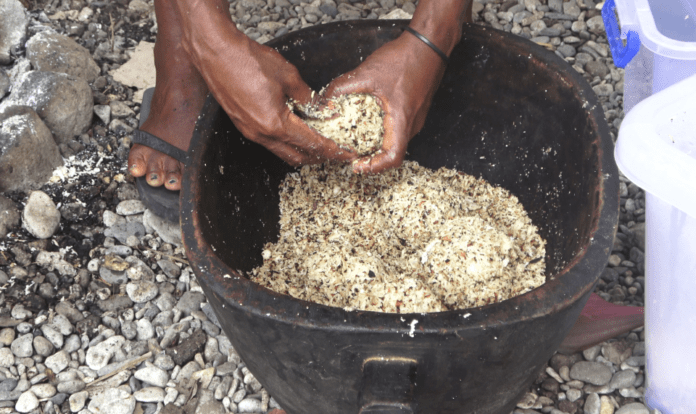BY JOHN HOUANIHAU
YOU may be asking, what is Venda-venda? It is a traditional food of Guadalcanal Province, the largest island in the Solomon Islands.
It’s basically a mixture of roasted coconut fiber and taro, and besides that, it involves mashing cooked pealed taro in a traditional wooden bowl called Popo with a long carved blunt-ended wooden stick (called the Tutuku) until the taro becomes soft and sticky, and later hand-pressed into small round-size pieces combined with the burned or roasted grated coconut fibers.
Gifted and specialized in making the Venda-venda is Rose Nafo from Avu’Avu in the remote Weather Coast of South Guadalcanal. She told SOLOMON WOMEN that Venda-venda is a traditional food passed down from the past generations until today and is still served throughout South Guadalcanal.
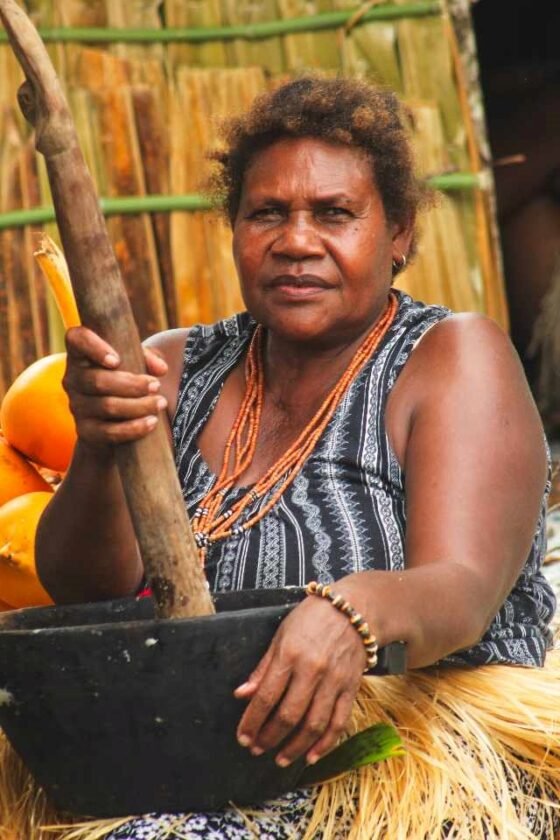

“To make a Venda-venda, you only need the following ingredients and materials: taro, dry coconut, coconut water, hot stones, a wooden bowl, and a stick.
“It is a delicacy that is enjoyed by the people of Guadalcanal and other neighboring islands in the country because of its unique taste, appealing presentation, and health benefits.
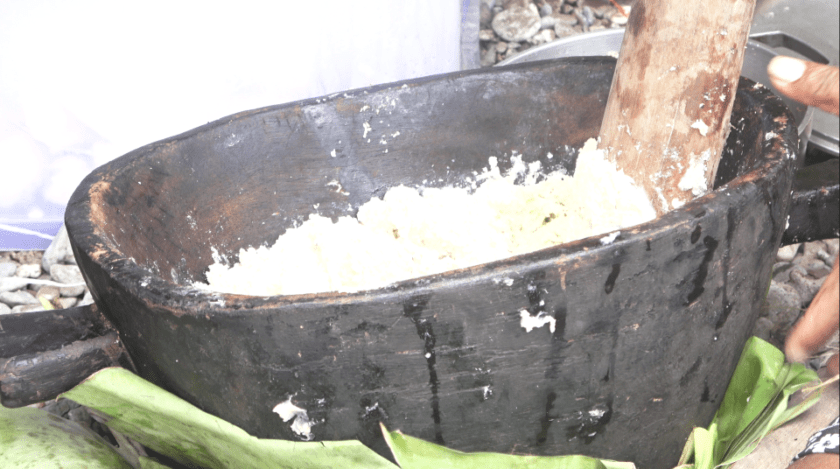

“However, there’s a step-by-step guide and recipe for making Venda-venda. This traditional Guadalcanal food requires some skill and practice to make, but with the right tools, ingredients, and techniques, you can master it in no time,” said Rose during this year’s Guadalcanal 2nd Appointed Day Celebrations: Mini Trade Show event held at Mamara, West Guadalcanal.
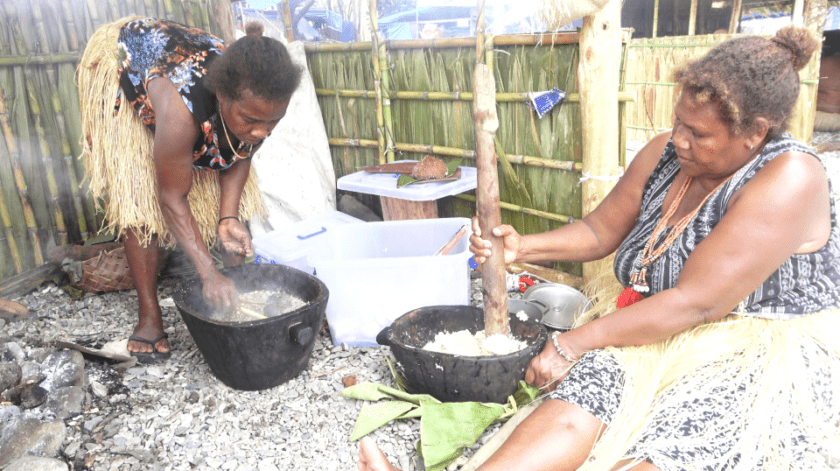

She noted that there are essential materials and steps needed to begin the process of making Venda-venda, which requires some skill and practice but can be achieved with the right tools, ingredients, and techniques.
“The key steps to preparing Venda-venda are to first gather dry coconuts, taro, and stones from the river.
“To get the coconut meat in its purest form, you must first shatter and grate the coconuts. Keep the coconut water since it is also an important ingredient in the process of making Venda-venda.
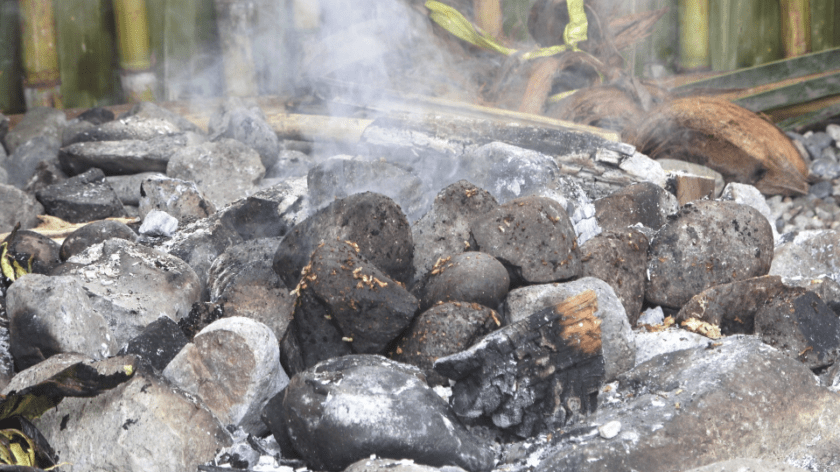

“The grated coconut is then burned or roasted with hot stones prepared in an oven. The heated coconut meat will turn a little bit brown and produce a sweet kind of smell when it’s done,” she explained.
She added that after completing the first-mentioned process, it is time to prepare the harvested taros.
“The taros skin must be peeled, making sure they are cooked. After it’s cooked, it’s time to transfer the cooked taros into the wooden bowl. The cooked taros are mashed using a wooden stick and added to the boiled coconut water (the combined mixture) in order to achieve a soft and sticky texture.
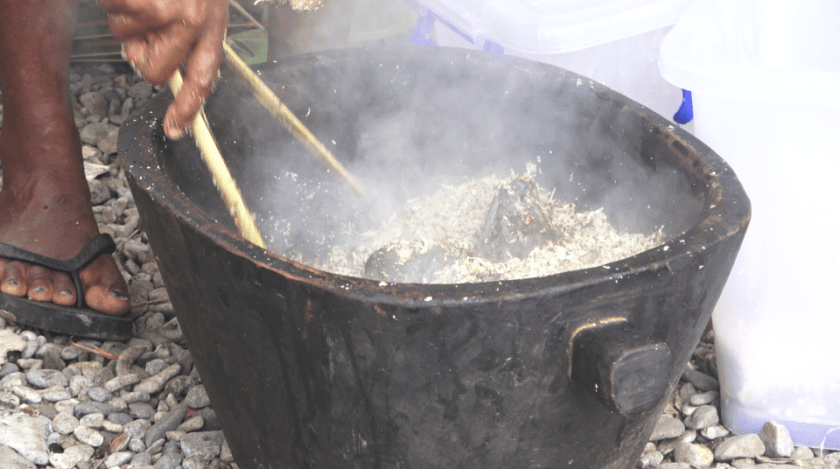

“We don’t use thick coconut milk while making Venda-venda.
“After completing the process, the combined mixture of mashed taro and cooked grated coconut meat was poured into the wooden bowl and finally hand-pressed into a small round (ball-shaped) shape, which was later ready to be served for eating.
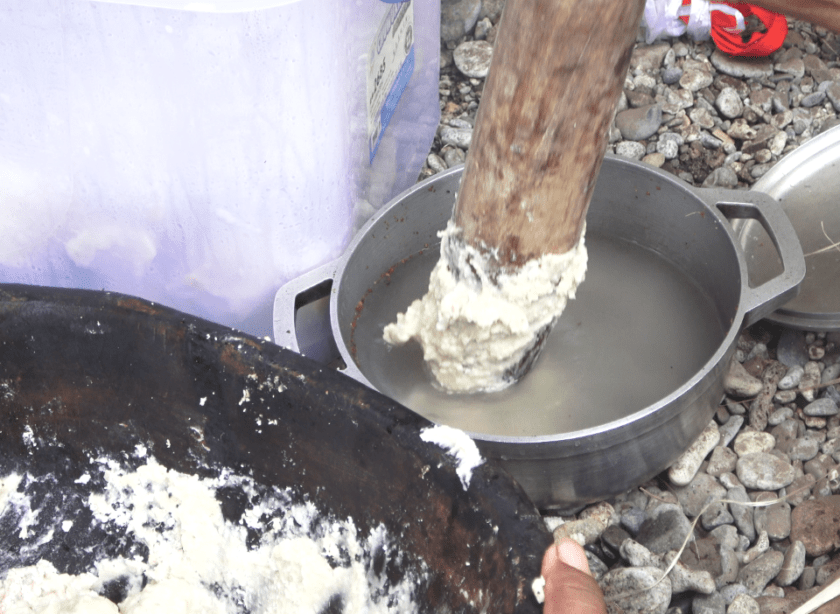

“Making Venda-venda can seem intimidating at first, but with the right tools and techniques, it is a straightforward process. It is a delicacy that you can enjoy at home,” she added. Likewise, Rose is proud to be part of this year’s Mini Trade Show event held at Mamara, West Guadalcanal, and more especially to showcase her cultural heritage to the people of Guadalcanal and other provinces, including oversea visitors.




































